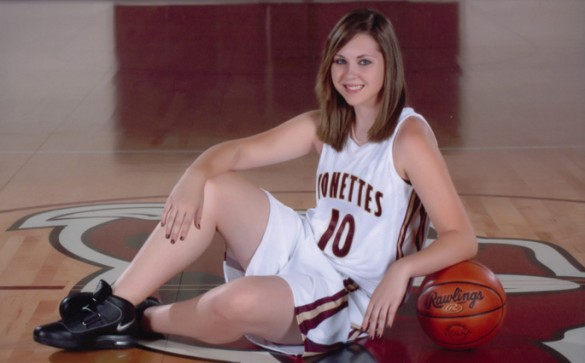
Cannon County High School basketball player Rebekah Faulkner doesn’t remember much about colliding with a rival player during a training camp game early this summer.
After diving for a loose ball, the 16-year-old recalls a relentless pounding in her head.
“It was the worst headache I’ve ever had. It felt like something was slamming into my head over and over again,” said Faulkner.
She was referred to Vanderbilt and learned she had suffered a concussion. What followed was an unwanted break from sports and a number of side effects, including more crippling headaches.
All she could do was lie in a cool, dark room to ease the pain, away from any light or noise.
“When a teenager doesn’t even want to pick up a cell phone or eat, you know that they are sick,” said her mother, Rene’. “It was scary because you knew she just wasn’t herself.”
Reports of child concussions like Faulkner’s have doubled in the last decade, partly because more children than ever are playing organized sports, but also from an increased recognition about these injuries in the sports community.
The Vanderbilt Sports Concussion Center saw more than 900 patients last year with concussions.
Alex Diamond, D.O., MPH, assistant professor of Pediatrics, Orthopaedics and Rehabilitation and medical director of Vanderbilt’s Program for Injury Prevention in Youth Sports, treated 142 young athletes, including Faulkner.
Diamond said young children and teenagers are often more susceptible to concussions because their brains are still developing, and can suffer more severe symptoms as well.
In the months following her injury, Faulkner struggled with memory loss and concentration, and had difficulties with speech and balance.
She had to drop an online summer class because she couldn’t use a computer. She missed basketball and volleyball camps, practices and games, and felt guilty about letting her teammates down.
The injury affected her emotions.
“She would cry a lot, or get frustrated very easily,” said her mother, who followed doctor’s orders to make sure her daughter limited any exposure to music or bright screens.
It was also imperative that Faulkner not participate in any physical activity that could lead to another head injury.
“The brain is like a muscle,” said Diamond. “If you tear a muscle in your arm and you keep trying to lift heavy things, not only is it going to hurt, it’s going to take longer to heal.
“Rest is really the mainstay of what we use to treat concussions,” he said. “With the proper treatment and recovery time, children are often more likely to bounce back from these injuries.”
Soon the fog began to lift for Faulkner. She underwent physical therapy to regain her balance, and plans to start speech therapy soon.
She’s able to drive again and, just last week, participated in her first basketball practice since her injury in June.
It’s been a long, uphill battle, but with patience and perseverance, Faulkner is finally getting back to being a teenager and doing what she loves.
“Sports are a big part of my life,” she said. “I love basketball and volleyball. I don’t know what I would do if I couldn’t play them.”
Vanderbilt has launched a number of efforts to help prevent and treat concussions and other sports-related injuries, including the CoachSmart App, sports safety clinics and pre-concussion baseline tests for young athletes.
Visit the Monroe Carell Jr. Children’s Hospital at Vanderbilt’s website for detailed information on concussion safety.















